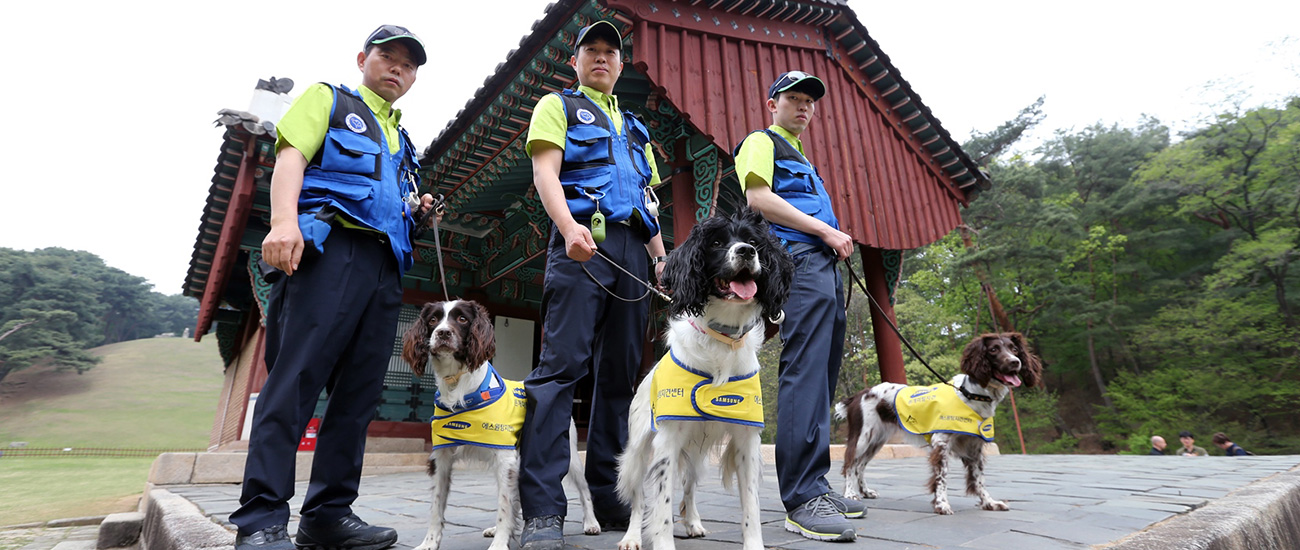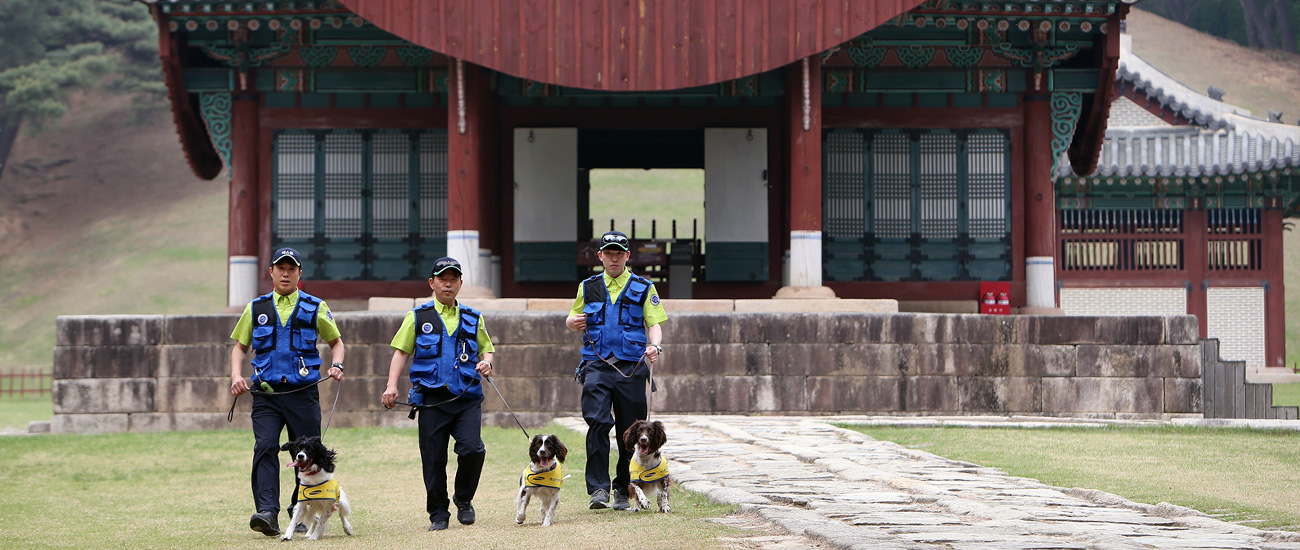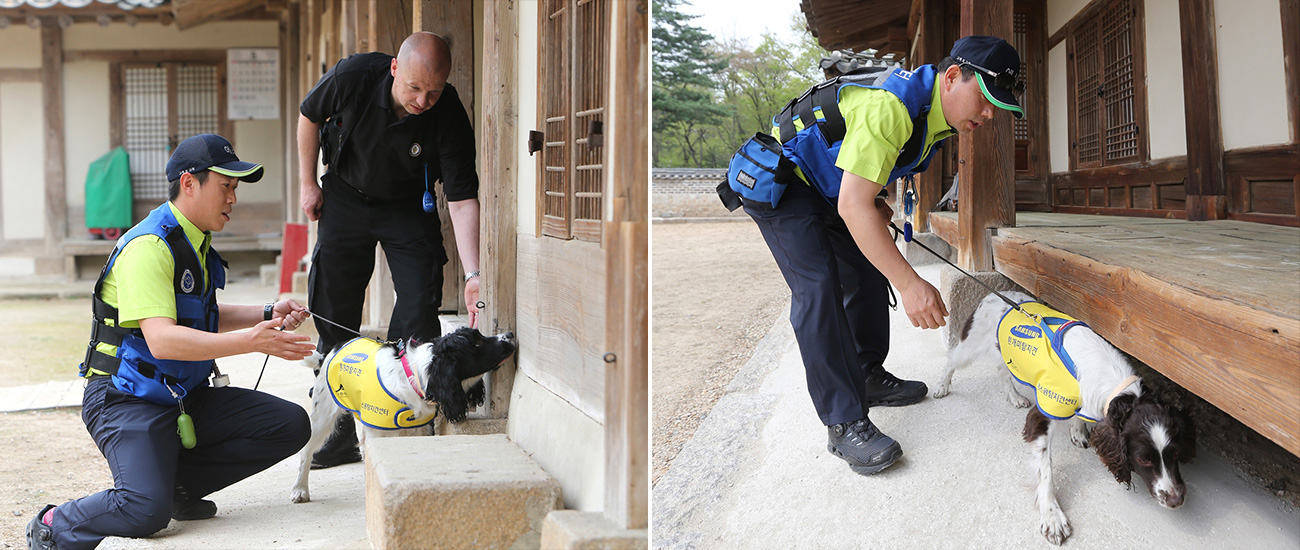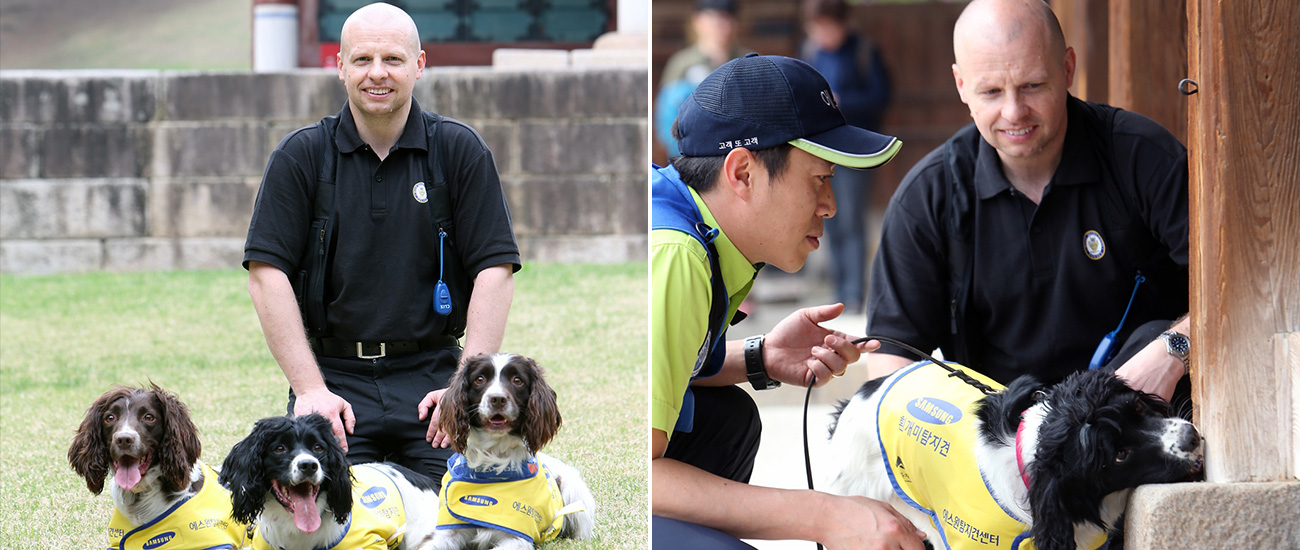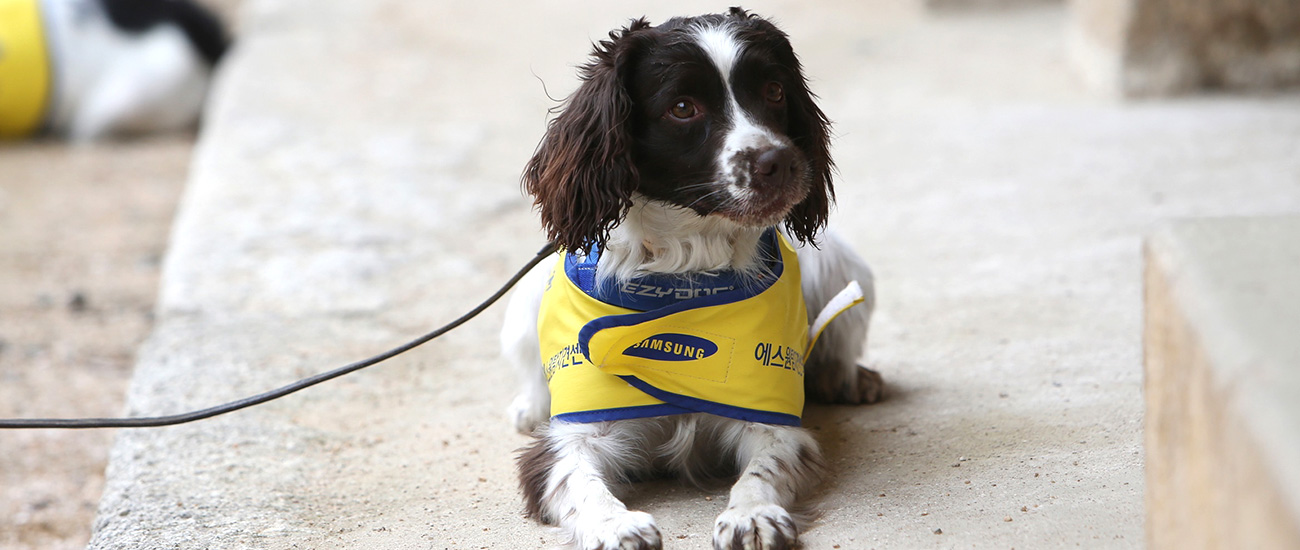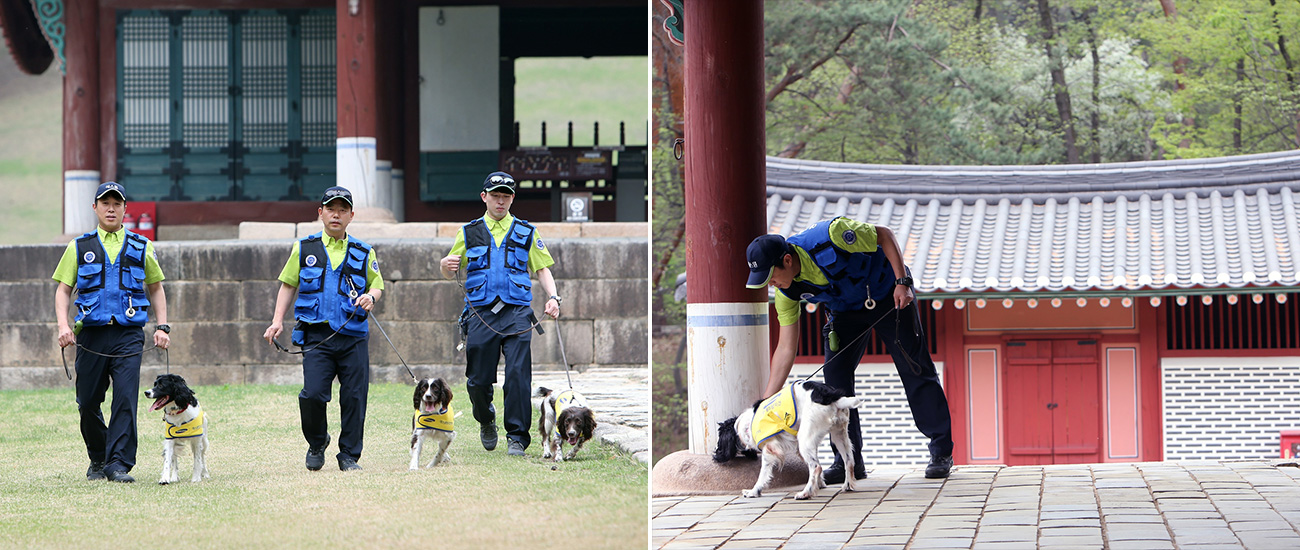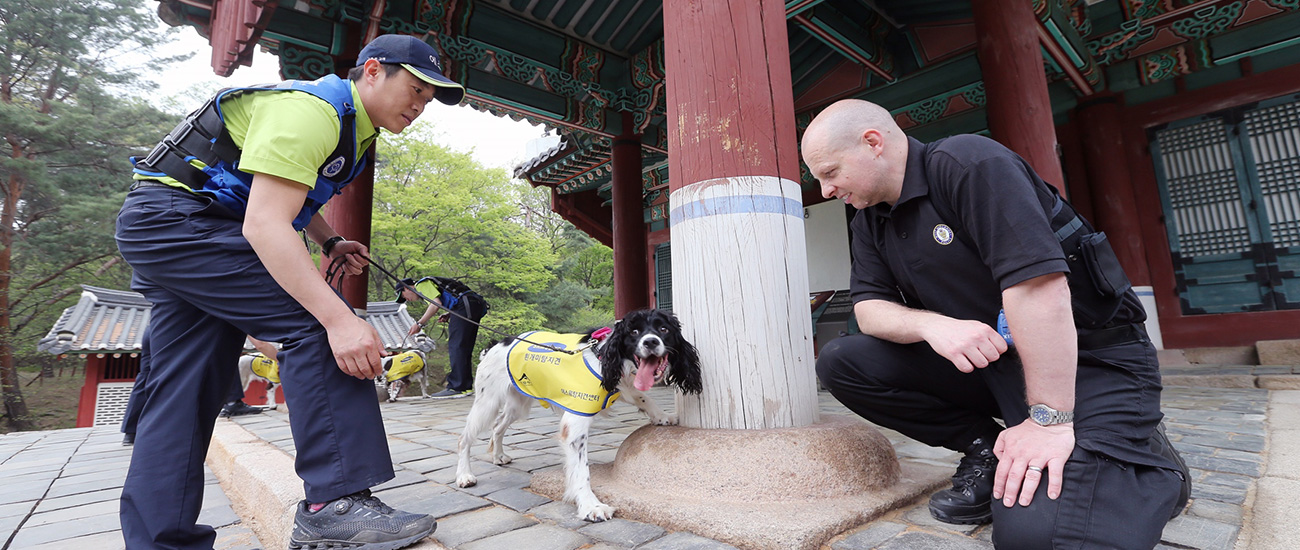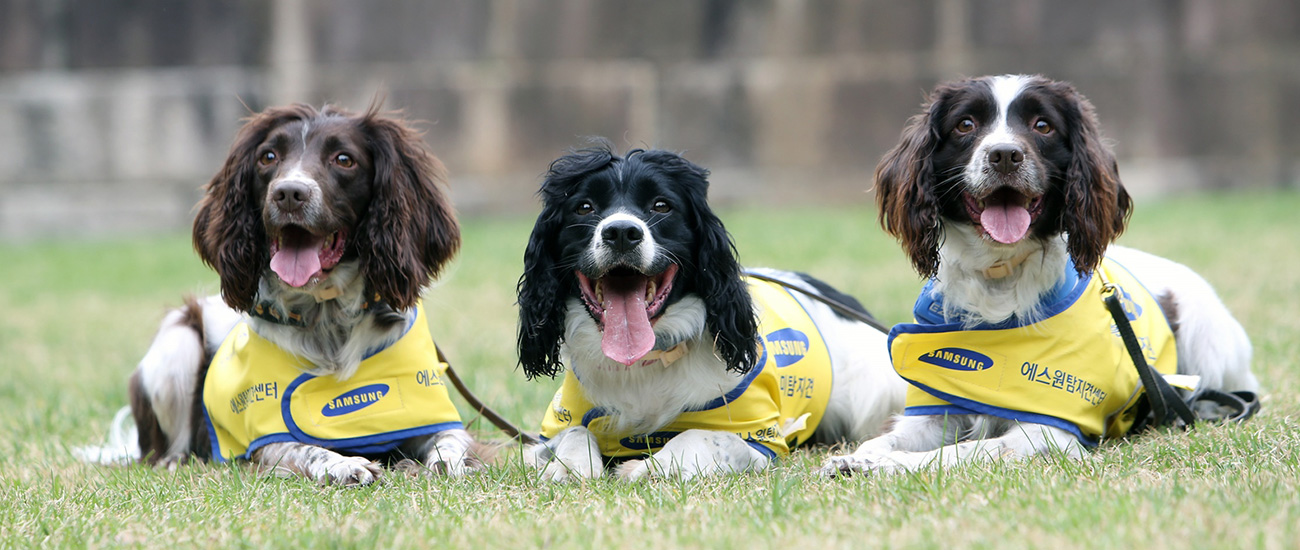Samsung C&T Resort Group has partnered with the UK’s West Midlands Police to breed and train operational dogs for use in the park and in Korea in general since 1995, when it took on the security dog business from within the group. Later, in 2003, the dog program started to expand with the use of detection dogs, which were first trained to screen for animals and plants, and later for dangerous substances like drugs and explosives as well as wild bears.
In 2007, Samsung C&T signed an agreement with Korea’s Cultural Heritage Administration (CHA) to oversee all preservation and restoration work at 60 historical sites around the country. Because of this, Samsung began also training its detection dogs to find termites and other insects which might damage these important structures. These efforts help ensure that both Koreans and visitors from other countries will be able to enjoy, appreciate and learn from these priceless reminders of Korea’s grand history for many years to come.
Recently, West Midlands Police dog trainer and expert David Raymond came to Korea to provide consultation and support to Samsung’s dog trainers working on the project.
Preserving 5,000 Years of History
Conserving Korea’s rich cultural heritage, especially its vast network of palaces and temples throughout the country, is something no one can do alone. It requires many individuals, working together to ensure that these keystones of Korean culture and society are preserved, and can be shared and appreciated by generation after generation. Sometimes it also requires dogs.
While it may seem a little strange to use animals as part of the process, they actually play an invaluable and irreplaceable role. About a third of Korea’s cultural heritage sites are made of wood, making them extremely vulnerable to insects such as termites and white ants, who can often damage these structures from the inside. Usually, by the time humans see these tiny destroyers, buildings have already been severely affected. So there needs to be a way to understand which structures are at risk as soon as possible in order to ensure their ongoing beauty.
A Nose for Protection
To better protect these cherished sites, Samsung C&T have employed trained detection dogs to seek out and locate the damaging insects before they can have much of an impact. These canine cultural curators are perfect for the job, as they are far more adept than their human counterparts at finding termites and ants thanks to a far superior range of smell for pheromones. While some very recent studies have actually shown that humans and dogs do have comparable abilities for certain smells, overall scientists estimate that dogs are between 10,000 to 1 million times better at identifying and tracking human, animal and insect scents than we are.
A Long Partnership with the UK
For the past 22 years, Samsung has had a relationship with the West Midlands Police (WMP) Dog Training Centre in the UK for breeding and training dogs for operational uses, including search and rescue and detecting dangerous items. The Centre is actually the UK’s largest supplier of operational dogs, and the program for supplying and training dogs for Korea is led by David Raymond, breed scheme manager at WMP.
“The dogs that are working here, are all English Springer Spaniels,” explains Raymond about Korea’s detection dogs. “They were bred from working stock in the UK. They were born in our kennels. We hand reared them with puppy walkers so they got heavily socialized.”
Raymond has worked for the West Midlands Police for more than a dozen years, and he and WMP have supported Samsung’s breeding and training efforts over that entire time.
“Samsung, we’ve had a really good long relationship, quite a special relationship,” says Raymond. “The handlers, they’re really good, they’re very sensitive to the dogs’ needs, and they raised them really well. They’ve got a real great team working here at the detection center and the guide dog center.”
Termites: A First Time for Everything
During his 13 years working with police dogs, Raymond has trained dogs to smell for many different things, though he admits Samsung’s request is a first.
“Termites, it is very unusual, but everything can be found on scent identification,” says Raymond, who has trained dogs to find cash, drugs, canned goods, cigarettes, stolen items, missing persons and even ice. He normally trains dogs for police work, which means identifying more immediately dangerous items such as firearms, narcotics or explosives. However, he maintains that the basic training principles don’t change, no matter the quarry. “It is very similar, you’re just training a dog to find an individual scent pattern,” he explains.
Dogs normally undergo an 8 to 13-week training regimen to become detection dogs, depending on what they’re learning to detect. They work closely with handlers to track specific smells, first out in the open and then under increasingly challenging conditions, using smaller and smaller scent pieces in increasingly difficult environments. Dogs who show strong qualities not just in finding scents but also in terms of work ethic – if they are not easily discouraged and still keen to keep searching even after 30 minutes – are the ones they use for the program.
On the Ground
Using dogs to investigate heritage sites is not as easy as just taking them around a building. In fact, there’s a lot to consider when using dogs to inspect Korea’s cultural icons.
“You’ve got to take the weather conditions, the environmental conditions, it could be that it’s raining … that will make it more difficult if it’s windy,” explains Raymond. “But also if you’re searching the temple there could be stuff on the floor like sand, there could be hot concrete, which could be hot on the dog’s feet, so again you need to take all these considerations.”
Dog Training Tips for Everyone
While the Samsung and WMP detection dogs are indeed impressive, those of us with “normal” dogs can use also some of MWP’s training methods to have a closer relationship with our canine friends and help them live better lives.
“Search games, I think, occupy a dog’s brain. And it gives them enrichment. Because they’re naturally designed to smell and sniff.” Raymond adds, “If you start doing sniffing games, throwing balls to the dog, lots of retrieving games, it helps the dog, helps you bond with it, the dog’s going to want to be with you, it’s going to be enjoyable, and … it will have a better quality of life.”
Once finished with their “careers,” detection dogs are put up for adoption, and are very in-demand by the general public. “There’s a large and wide list of people that want to rehome our dogs. They know they’re going to get a very trained dog,” says Raymond. “Most of our dogs do really enjoy retiring when they get there.”
The Next Breed
One generation of Samsung’s insect-detecting dogs has already come and gone, with 13 year-old Spaniels Bobae and Boram recently retired, spending their senior days at the Detection Dog Center, with a new breed succeeding them in protecting Korea’s cultural heritage.
Currently, four dogs lead the charge for Samsung: Yoko, Olivia, Oxo and Piper. All four also came from the MWP breeding program, and now work full-time with their inspection duties and training. With these dogs on the scent, we can be sure Korea’s temples and palaces continue to be beautiful and breathtaking for years to come.


